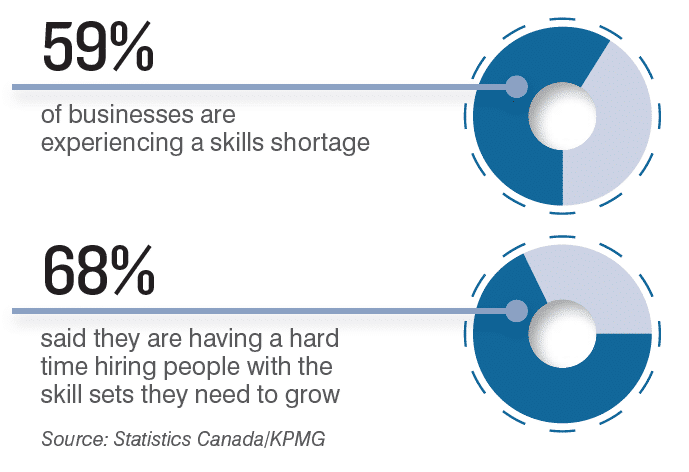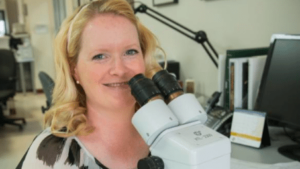The fourth of five entries in our Pillars of Professionalism series, profiling people and the skills they’ve mastered to help teach you skills for success in today’s seed industry.
According to the University of Alberta, nearly 60% of the Canadian workforce lacks training in new technologies. This skill shortage results in decreased productivity and a high turnover rate that costs Canada more than $70 billion in GDP, says a recent study.
As director of member strategy and solutions for Seeds Canada, Krista Erickson knows the importance of training. She spent her life as a seed analyst prior to becoming executive director for the Commercial Seed Analysts Association of Canada (CSAAC), which in 2021 merged with four other industry associations to form Seeds Canada.
She says many are surprised to learn there is no formal training program for seed analysts — instead, aspiring analysts must train in an accredited seed lab under supervision of other experienced, accredited analysts. To become an accredited seed analyst, you must pass an exam administered by the Canadian Food Inspection Agency (CFIA).
She now helps Seeds Canada members with career and skills development, including its seed analyst Professional Class members.
In order to apply to write your exam to become an accredited seed analyst, you must have 1,500 hours working under the supervision of an accredited analyst for both purity and germination respectively. It takes a minimum of two years to be able to write both the purity and germination exam for all crop kinds.
Seed analysts make up the majority of Seeds Canada’s Professional Class membership category, and Erickson is working hard to begin creating new ways for aspiring seed analysts to enter the profession.
“Seeds Canada can offer training for them, as it currently falls on employers to train their seed analyst employees. I know both the labs and the analysts themselves would appreciate that. I think we can look to other seed testing associations and build collaborative relationships with them,” she says.
“We don’t by any means have to reinvent the wheel. There are training opportunities out there, and we can collaborate with others to our mutual benefit. I think that’ll be great for our members and for the other associations as well.”
Asking herself how to fill that gap is a daily part of Erickson’s job at Canada’s newest seed industry association, which launched Feb. 1, 2021, and recently marked its first anniversary.
“Where are there gaps within our membership base? And how can we fill those gaps with anything from formal professional development opportunities to more informal opportunities to connect with like-minded people? That’s what we’re working to discover.”














